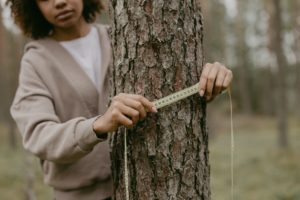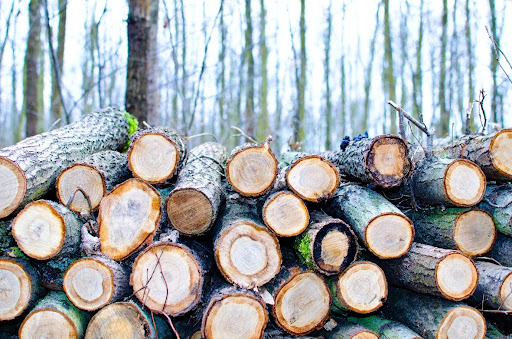If you’re like most business owners, maximizing profits is always a key concern. And if you’re in the timber industry, getting the most value for your products is essential to your success. Not only do you need to know what kind of timber you have – but you also need to get an accurate appraisal of its worth. Thankfully, with the help of a professional timber appraiser, you can do just that and more. In this article, we discuss the different methods of timber appraisals and how they can help you maximize the value of your timber products.
What Is Timber Appraisal?
Before we delve into how timber appraisal can be beneficial, let’s quickly address what it is. In a nutshell, timber appraisal is the evaluation of a timberland property to determine its worth. This process is important for various reasons, including helping to set property taxes, establishing a value for insurance purposes, and determining the property’s sale price. A certified appraiser will visit the property in order to assess it. They will consider several different factors, including the type of trees on the land, the age of the trees, the condition of the trees, and the property’s location. With this information, they will be able to estimate how much timber is on the land and what it would cost to harvest it.
10 Ways Timber Appraisal Can Help Maximize Profits
Now that you know the basics of timber appraisal, here are 10 ways it can help you maximize profits:
1. Helps Keep Loggers Honest
Having your timber appraised by an experienced professional will help ensure that loggers are not taking advantage of you. An accurate timber valuation can give you the confidence to demand fair compensation for the lumber harvested from your land.
2. Reduces Risk of Over-Harvesting
The analysis provided by a timber appraisal helps identify areas where over-harvesting could occur, allowing landowners to avoid this pitfall and maintain healthy forests in the long term.
3. Improved Negotiations
With an accurate valuation in hand, you’ll have a much better chance at successful negotiations with buyers or sellers because you’ll have a firm understanding of what your timber is worth.
4. Improved Marketing Practices
Appraising timber can also help you develop better marketing practices by helping you understand how much each species or grade of lumber is worth compared to others. This can help you make smarter selling decisions and differentiate between profitable and unprofitable timber sales.
5. Better Planning Forecasts
Timber appraisal provides a solid foundation for planning future harvests, as it can provide valuable insight into market prices and trends that will affect future harvesting operations. With this knowledge, you’ll be better equipped to plan ahead for profitable harvests.
 6. Lower Risk of Losses
6. Lower Risk of Losses
Timber appraisal can also help reduce losses due to mismanagement or market fluctuations by providing valuable information about current conditions and likely outcomes in the future. This allows you to make better decisions that will minimize risks and safeguard profits.
7. Higher Asset Values
Accurate timber appraisals also contribute to higher overall asset values, as it provides a fuller understanding of the value of your land and timber holdings. This can be beneficial when selling or refinancing a property, as lenders often require appraisals for these purposes.
8. Improved Management Strategies
A thorough timber appraisal can provide insight into potential management strategies for maximizing profits from harvests. With this knowledge, you’ll be able to develop more efficient harvesting techniques and better plan for future harvests.
9. Increased Property Value
By accurately assessing the value of your timber, you can also increase the overall value of your property and make it more attractive to potential buyers. An accurate appraisal will ensure you don’t miss out on increased profits from a sale or refinancing transaction.
10. Reduced Tax Burden
Finally, an accurate timber appraisal can help reduce tax obligations by providing evidence as to the true market value of your timber holdings. This can be particularly beneficial if you want to minimize capital gains taxes when selling large parcels of land.
11. Updates and Ongoing Appraisals
Regularly updating your timber appraisal ensures that you are always aware of the current value of your woodland assets. As the market changes, the value of your timber may fluctuate, and staying informed of these changes can help you make better decisions about harvesting and selling your timber products. Updated appraisals can also reveal new opportunities for interlinking and collaboration with other industry professionals.
12. Identifying Additional Revenue Streams
A comprehensive timber appraisal can help you identify additional revenue streams that you may not have previously considered. For example, you may discover that certain tree species on your property are valuable for non-timber products, such as nuts, fruits, or essential oils. By expanding your offerings and diversifying your income sources, you can increase your overall profits.
13. Enhancing Sustainability Practices
Timber appraisals can provide valuable information on the ecological health of your forest, allowing you to implement sustainable forest management practices that ensure the long-term profitability of your timberland. By protecting and enhancing the health of your forest, you can maintain high-quality timber and ensure a steady flow of income for years to come.
14. Access to Incentive Programs
Having an updated timber appraisal can help you qualify for incentive programs and grants designed to promote sustainable forest management. These programs can provide financial support for implementing conservation practices and other measures that can help you maximize your profits while maintaining the health and productivity of your forest.
15. Facilitating Timberland Purchases and Sales
When buying or selling timberland, having an accurate and up-to-date appraisal can help streamline the process and ensure that you are making a well-informed decision. Buyers can use the appraisal information to assess the potential return on investment, while sellers can use the appraisal to set a competitive asking price. Additionally, an appraisal can help both parties identify opportunities for interlinking and collaboration that could further enhance the value and profitability of the property.
Different Methods of Timber Appraisal
There are several different methods of timber appraisal that a professional appraiser can use. Depending on your needs, the appraiser may utilize one or more of these methods to determine your property value. The most common methods include the following:
Sales Comparison Approach
This approach involves collecting data on similar properties recently sold in the area and comparing them to the appraised property. The appraiser takes into account factors such as location, size, quality of timber, age, type of species, and other characteristics when making their comparison. A major premise of the sales comparison approach is that similar properties should have similar value, but the appraiser must also consider other factors, such as market conditions, demand for timber, and current trends, when assessing the value of a particular property. The sales comparison approach is a reliable appraisal method when there is sufficient market data to draw upon. However, when the market is limited or non-existent, other methods may need to be used instead. Additionally, this approach can be challenging in areas with large variations in timber quality and density, making it difficult to compare properties accurately.
Cost Approach
This approach involves estimating the cost to construct a new structure of similar characteristics as the one being appraised. This includes taking into account the costs associated with acquiring and harvesting timber, any labor or processing fees associated with preparing it for use, transportation costs, and taxes, if applicable. The appraiser then subtracts this estimated cost from the estimated market value to estimate the value of the structure’s timber content. This method is often used in cases where there are no comparable sales available in order to determine the value of a particular property. Please note that the asset’s cost and value are not always the same, and it is up to the appraiser to determine which one should be used. The method for appraising the value of each component of the property being bought is a combination of the following two appraisal processes:
Merchantable Timber Appraisal
This method of timber appraisal involves the evaluation of the volume and quality of standing merchantable timber on a piece of land. The appraiser calculates an estimated value by taking into account factors such as tree species, diameter, height, and condition. This approach is useful when the property has not yet been harvested or when no comparable sales are available to make a proper assessment.
Non-Merchantable Timber Appraisal
The timber and land that cannot be sold are valued using transaction evidence from other similar timber sales in the market. The appraiser considers factors such as stumpage, land characteristics, and transportation costs when assessing the value of the non-merchantable timber. The goal is to provide an estimate of the value of this timber as a contributing factor to the property’s overall value. The two methods discussed are most applicable when appraising timber. However, there may be cases where other approaches could be used in some circumstances. The limitations of these two approaches are that they rely on market data and can only provide an estimate of the property’s value.
Income Capitalization Approach
This approach is often used to determine the value of timberland where a steady income stream can be expected. The appraiser considers factors such as current market conditions, timber prices, and harvesting costs when estimating the property’s value. This approach is most applicable in cases where there are long-term contracts or when the property has an established history of producing income from timber sales. The principle of anticipation is also relevant when appraising the value of timberland; an estimate is made based on expected future income from timber harvests. It is also useful for determining the value of properties with long-term investment potential. However, it can be difficult to accurately determine the future values of timberland, making it a less reliable method for assessing value.
Closing Thoughts
Timber appraisal is an important tool for maximizing profits from timber sales and improving overall management strategies. It can provide insight into your lumber’s value and market conditions that will affect future practices. By leveraging this information, you can make more informed decisions leading to improved profits and asset values. For these reasons, it’s important to work with a qualified appraiser who can help you maximize the value of your timber holdings. Tall Pines Forest Management is here to help you get the most out of your timber investments in Maine. Our experienced team of appraisers can provide comprehensive and accurate assessments that will give you a better understanding of the value of your timber holdings. With our expertise, you can be confident that you are receiving fair compensation for the lumber harvested from your land and implementing management strategies that maximize future profits. Contact us today to learn more about our services and how we can help ensure your success in the timber business.


 6. Lower Risk of Losses
6. Lower Risk of Losses
0 Comments